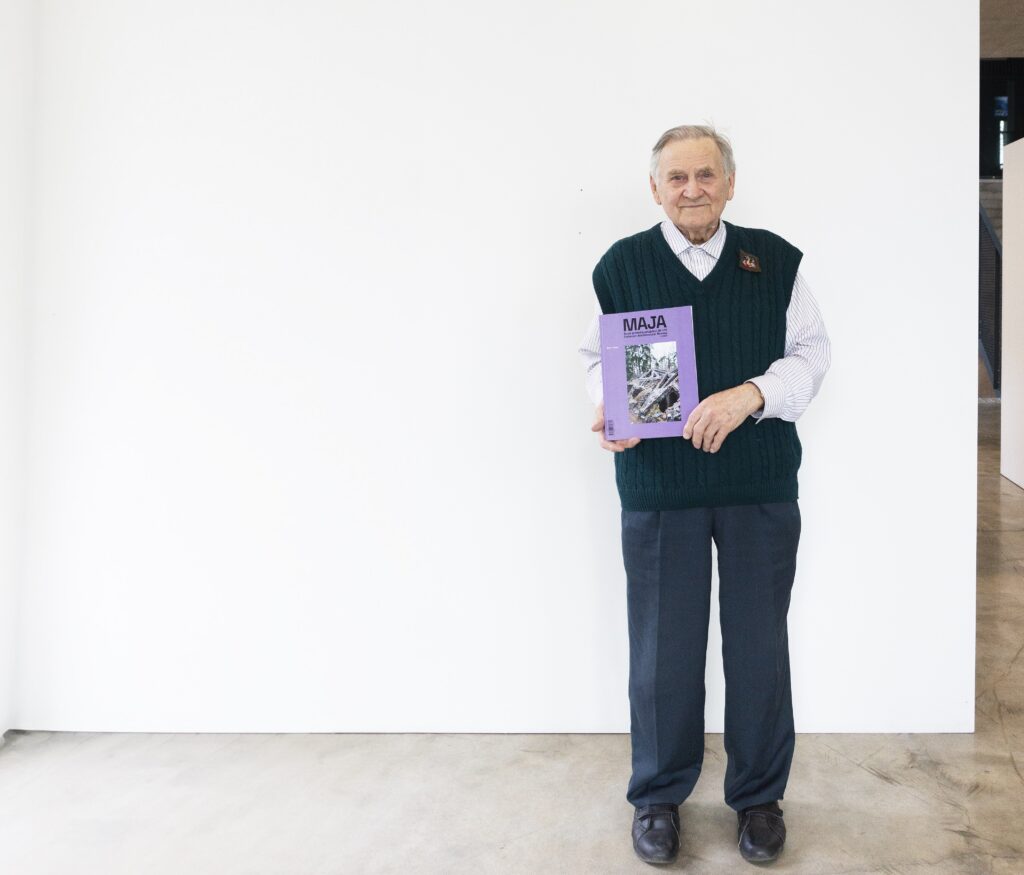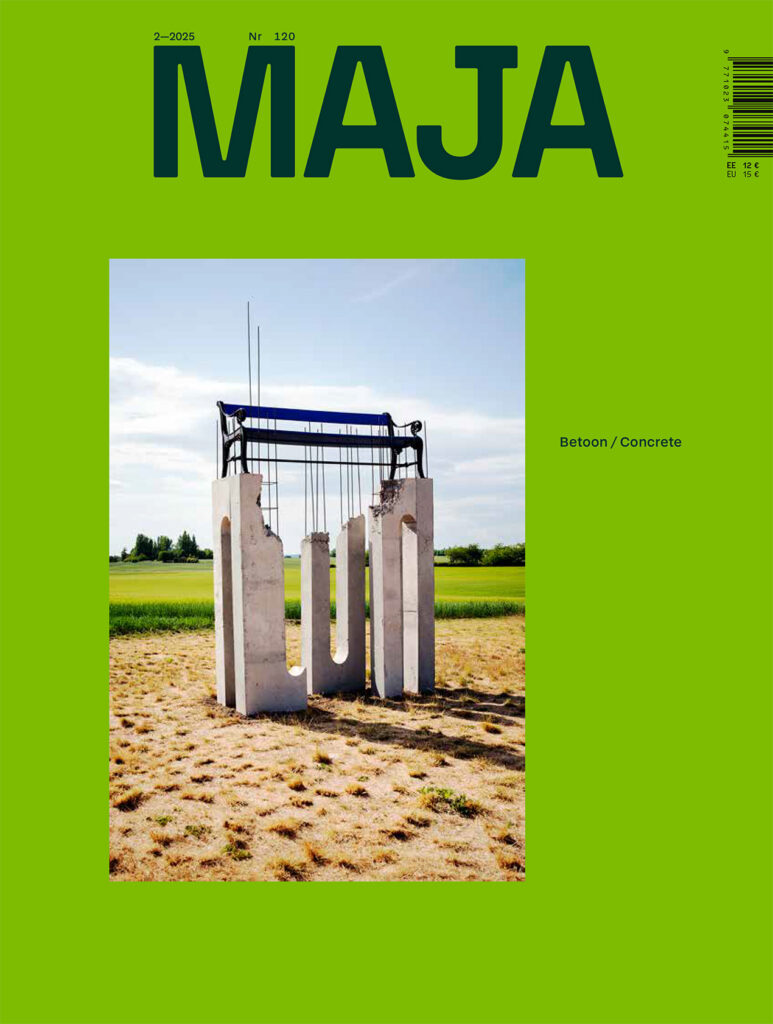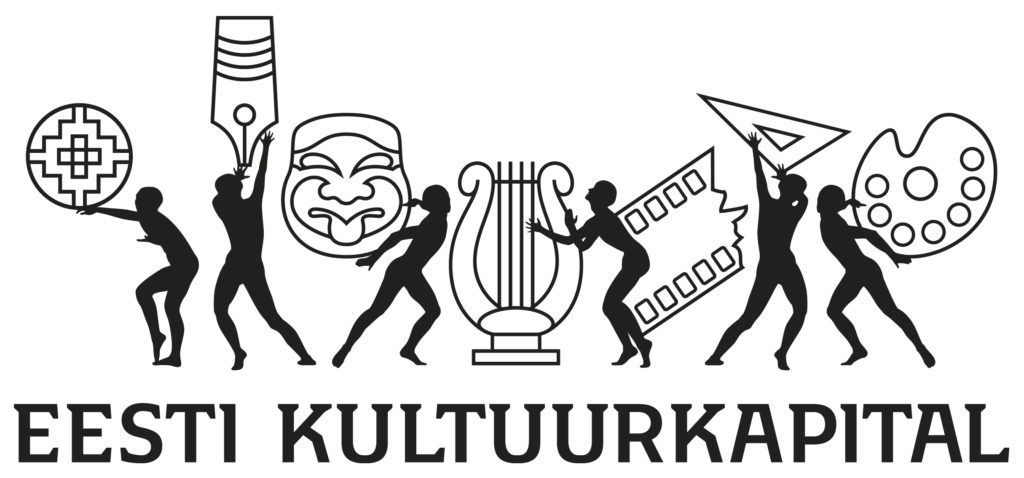I talked with geologist and professor Rein Einasto quite a bit on the phone when preparing the ‘Stone’ issue for Maja. Our contact began via a contact form on the website of the Union of Estonian Limestone, where I sent a message asking whether the Union could put me in touch with some relevant people for a natural stone focused magazine issue. In two days, if not one, my phone rang with an unknown number, and on the other end was Rein Einasto, the Limestone Man (as he introduced himself). We talked for over an hour about how stone contains information about climate change, how geological or ‘stone-based’ thinking could be useful for the construction sector, how the use of stone has a strong political-ideological dimension, how Norwegians buy ‘homely’ Estonian limestone for their summerhouses. After the call ended, I realised with some surprise that, just like in the e-mail addresses of many of my peers, the number in Rein’s e-mail address—i.e., 34—refers to the birth year of the owner.
Rein Einasto celebrates his 90th birthday in July this year. According to the 2021 census data, Estonia has about 12,000 people of this age, and only 2,000 of them are men. Even if a high age was only down to winning a genetic lottery, there is still a lot to learn from Rein about how to maintain an interest and keep oneself engaged in world affairs for many decades. Rein has views on issues that go far beyond his own discipline, but nevertheless seem to stem from it, and he weaves them into broader social themes, including those related to urban environments and planning. Sometimes it seems to me that even many 30-year-olds lack the interest to constantly reinterpret the world, especially given the continuous influx of new ways of doing so. (Then again, many fortunately do not.) But apathy is not Rein Einasto’s thing. I suspect that this is partly due to his regular morning jogs as well as purely practical mobility habits, the latter being illustrated by his comment when we were arranging to meet: ‘I can come wherever; after all, there is public transport’. And neither was it an obstacle that the Estonian Academy of Arts where we finally agreed to meet happened to be one of the few places in the city centre that day where you could not get by public transport, as tram lines were temporarily out of service. Rein came on foot through the Old Town.
Reading Einasto’s ideas in 40-year-old issues of Sirp ja Vasar, in the articles co-written with Hubert Matve and Rein Zobel, I became slightly envious of such interdisciplinarity, a phenomenon that is much-discussed today but often remains merely a buzzword. In talking to Rein Einasto, interdisciplinarity shows itself to be something more than calculated collaboration between experts of different fields. It has a cultural rather than project-based meaning, consisting of commonly shared social responsibility, making sense of collective action, or, to use Einasto’s own expression, being in a common spirit. The background of this is well explained by the following quote from his 2018 essay in Mulkide almanak [Mulks’ Almanac]: ‘Timeless universal values are receding in the face of proliferating egoism. It is obvious that if humans want to survive as a species and avoid the impending ecological catastrophe, it is not possible to continue in the same way; both the wise man (sapiens sapiens) and man the maker (homo faber) need to individually self-develop using its species’ advantage—the mind—to evolve into sapiens ethicus already in their lifetime. That’s all the time we have left before the eco-catastrophe hits!’.
In our conversation, Rein keeps referring to Albert Schweitzer’s account of the connection between culture and ethics, then to Jaan Eilart’s views on the importance of being on one’s own, Kalevi Kull’s theoretical biology summer schools that he attends every year, and finally to Maiko Mathiesen recent presentation on degrowth at the Club of Rome. He emphasises the need of a society-wide paradigm shift: ‘We don’t need growth, but degrowth, an organic economy that would satisfy the needs and aspirations of future generations too’. In the afterword of his forthcoming book of rhymed poetry he writes: ‘We are living in the situation of an accelerating paradigm shift in terms of values and lifestyles, at the twilight of the self-centered free-market system of enriching yourself at the expense of others, where eco-social restrictions to economic freedom are inevitable. A consumer society with its lavishness and ever-expanding hedonism cannot be a sustainable welfare society. What say do we have in deciding whether this twilight period of human development is followed by a long dark night or rather by an immediate new dawn, like in the white nights of Nordic summers?’.
‘This [filling all the empty spaces with buildings] is in my view currently one of the main crimes in the city’s construction practice that will be very difficult to remedy’.
When I ask him what should urban space be like in order to take into account the whole range of population, Einasto replies with criticisms of Tallinn city administration’s planning practice that allows for disrespectful demolishing and shows little appreciation towards what already exists (centering his argument around the limestone clad Linnahall). It allows for the building up of green spaces such as Lasnamäe escarpment that have a crucial role to play in urban nature. Einasto: ‘All the remaining empty spaces in the city should be turned into parks, not filled with buildings with the sole aim of selling more apartments per square kilometre’. I try to push the idea that some of the parking lots could nevertheless be replaced with apartment buildings, and to get Rein’s sign off on this. However, he seizes on the topic of parking lots: ‘In Oulu, there is an underground parking lot [Kivisydän] built within rock under the entire city centre. We should have something similar at least in Lasnamäe where groundwater lies deep. It is a resource—first you could extract the limestone for construction and then move the parking entirely underground. Modern technology enables to extract limestone without any blasting whatsoever’.
Returning to the topic of current planning practices in Tallinn, he says: ‘This [filling all the empty spaces with buildings] is in my view currently one of the main crimes in the city’s construction practice that will be very difficult to remedy’. In discussing the conduct of large landowners who do not take broader social interests into account, he asks me (or us), rhetorically: ‘Where is the limit of crime?’. ‘It is a question of interpreting what freedom means. It is positive that human minds are free in their creativity, but we cannot give free rein to criminals. In a democracy we have means for limiting crime. If a large landowner keeps buying up large areas of land and doing as he pleases without noticing the local people or taking their opinions into account—this constitutes a criminal exercise of power’.
In the spirit of the current issue, we talk about benches too: ‘In Mustamäe, there are some very nicely renovated buildings, but benches can only be found where there is a little bit of greenery. But what could be better than a bench at each sunward-facing entrance? People come with their shopping bags and want to rest for a minute, or just sit around in sunshine and take in some fresh air’. Finally, I ask Rein’s advice on how to retain optimism in the face of all that we have talked about. He responds by asking whether I know the following joke: ‘The pessimist says that the situation cannot get any worse. The optimist says—yes, it can.’
In common spirit.
LAURA LINSI is an architect at LLRRLLRR, a lecturer at the Estonian Academy of Arts and the University of the Arts London, and the editor-in-chief of Maja.
PHOTO by Laura Linsi
PUBLISHED: MAJA 2-2024 (116) with main topic OLD AGE





